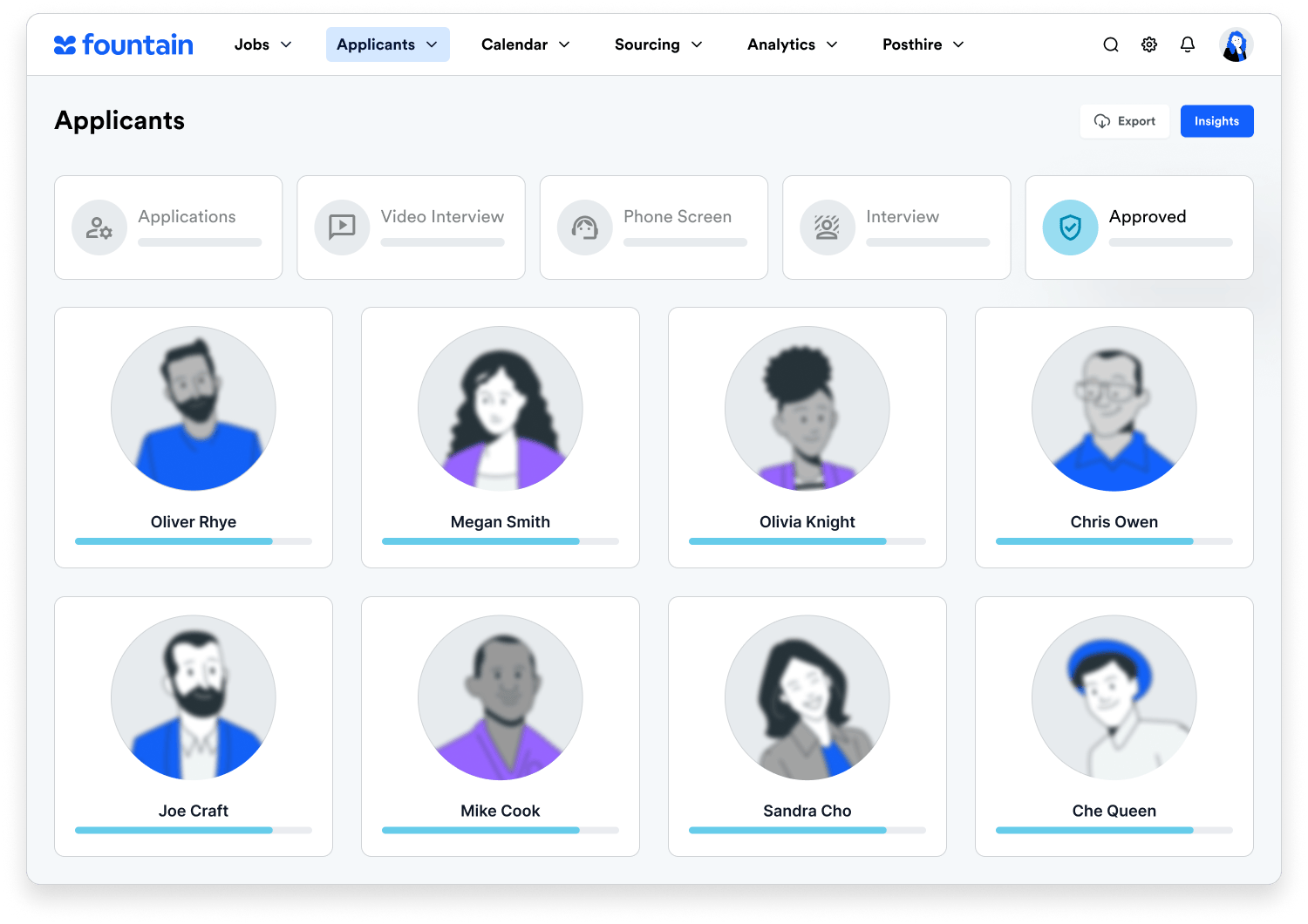When it comes to high-volume hiring, speed is everything. You don’t have the luxury of slowly sifting through tons of applicants to find the perfect candidate. If you move too slowly, your perfect candidate will move on and work with a company that was able to act fast, while still being efficient, effective, and thorough.
High-volume recruiting requires the following 7 steps:
- Prep work – creating the job posting
- Sourcing candidates
- Applicant conversions
- Selecting candidates
- Interviewing
- Document checks
- Hire/onboarding
We recently had a webinar where Kyle Proctor reviewed some of his favorite tactics to speed up the recruiting and hiring process. Now, you may be thinking that when you move faster, you increase the risk, with things getting sloppy and hard to manage, but that just isn’t the case. Not only can speed help you get more candidates, but it can also help retain them, too. Learn how to increase quantity without sacrificing quality.
These are some of the biggest high-volume hiring challenges organizations face on a daily basis:
- Cost-per-hire
- Lack of candidate engagement
- Poor candidate experiences
- Time restrictions.
If companies fail to innovate their hiring strategy, they will continue to have high operating costs, an ineffective recruiting process, and expensive turnover. Managing the cost-per-hire is crucial. Costs increase exponentially when you’re posting on a job board, not to mention the time incurred for screening, vetting and interviewing, so you need to ensure that your process isn’t eating up unnecessary costs and time, but rather prioritizing efficiency and effectiveness.
Those in the high-volume hiring space know that candidate no-shows, canceled interviews and unprepared candidates are a constant battle. You need to keep candidates engaged throughout the interview and hiring process, or you run the risk of them dropping off. You can do this by texting candidates to keep them in the loop, and giving them all the information they need about the process up front, so they have the ability to be prepared and informed at all times.
Everyone has applied to a job where they’ve had a poor experience. The likelihood of you sticking around for a company that didn’t execute the recruiting process well is extremely low, so it’s critical that you make this a priority for your candidates. You can create a better experience by making the process feel as personalized as possible, limiting the time they need to commit to completing the application (the initial application shouldn’t take more than 5/10 minutes), and never leaving the candidate in the dark.
Lastly, imagine trying to tackle all of the above challenges, all while trying to hire people as quickly as possible. You need a hiring system that’s built to manage all of these challenges – corporate platforms just aren’t enough.
With the right tool, you’re able to automate 5 of the 7 steps mentioned above – sourcing, applicant conversions, selecting candidates, document checks, and onboarding – which significantly helps decrease the time-per-hire, and gives you the ability to focus more specifically on the candidate experience, engagement, and cost.
Managing high-volume hiring shouldn’t result in a decrease in quality in order to maximize quantity. So long as you remember to have a candidate-first approach, and have the right tools and systems in place to help automate and manage your talent acquisition program, high-volume hiring doesn’t have to be nearly as challenging as it has previously been.

